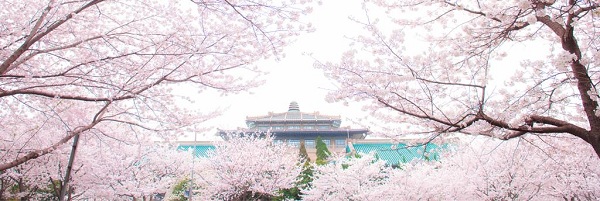Wuhan University


Wuhan University (WHU) is a comprehensive and key national university directly under the administration of the Ministry of Education. It is also one of the "211 Project" and "985 Project" universities with full support in the construction and development from the central and local government of China.
The history of Wuhan University can be traced back to Ziqiang Institute, which was founded in 1893 by Zhang Zhidong, the then governor of Hubei province and Hunan province in the late Qing Dynasty (1644-1911).
In the process of development and evolution, the institute changed its name several times before finally being named Wuhan National University in 1928. It is one of the earliest comprehensive national universities in modern China. By the end of 1946, the university had established six colleges, the colleges of liberal art, law, sciences, engineering, agriculture and medicine. In 2000, an amalgamation of the former Wuhan University, Wuhan University of Hydraulic and Electric Engineering, Wuhan Technical University of Surveying and Mapping, and Hubei Medical University was announced, which ushered in a new era in its 100-odd years of development.
For the past century, Wuhan University has built an elegant palatial architectural complex of primitive simplicity which sublimely blends the eastern architectural style with that of the west. It is honored as the "Most Beautiful University in China". Furthermore, Wuhan University's centennial humanistic accumulation boils down to its succinct motto, that is, "Self-improvement, Perseverance, Truth-seeking & Innovation."

Since its establishment, Wuhan University has cultivated more than 300 thousand professional talents in various occupations, among whom there are over 100 members of the Chinese Academy of Science and the Chinese Academy of Engineering. They have made great contributions to the national construction and social advancement. The remarkable achievements of Wuhan University have won itself an extensive international reputation. In 1999, the world renowned journal Science listed Wuhan University as one of the most prominent institutions of higher education in China.
Burgeoning are the international exchanges and cooperation of Wuhan University in recent years. It has established cooperative relationship with more than 415 universities and research institutes in over 45 countries and regions.
In addition, Wuhan University is also renowned for its Cherry Garden. The Cherry Garden is quite small, but it is the most beautiful spot on campus. Walking on the Cherry Blossoms Avenue, you can see nearly 200 pure Tokyo cherry trees blossoming along the 300-meter-long avenue like a white jade belt floating in the air. Looking down from the roof platform of Laozhaishe (students’ dormitory building), one would find the cherry blossoms like flying clouds amidst the green in the garden.
The prime flowering season of the cherry trees is for about a week around March 20, during which about 100,000 visitors flock to the university and enjoy the blossoms each day. Although Wuhan University has been carrying out some measures to limit the number of visitors, such as charging money for admission, they do not seem to be very effective in reducing the crowds.
In 1938, the Japanese invaders occupied Wuhan,making Wuhan University a field hospital. In the spring of 1939, cherry trees were introduced from Japan to Wuhan University, and these were the first cherry trees on the campus of Wuhan University. After the diplomatic relations between China and Japan normalized, Wuhan University received more cherry trees from Japan as gifts.
Cherry trees were also introduced through other channels and replanted, so the number has increased to more than 1,000 in Wuhan University with four botanical species and more than a dozen cultivars.
Address: 299 Bayi Road, Wuchang district, Wuhan, Hubei province
Postcode: 430072







